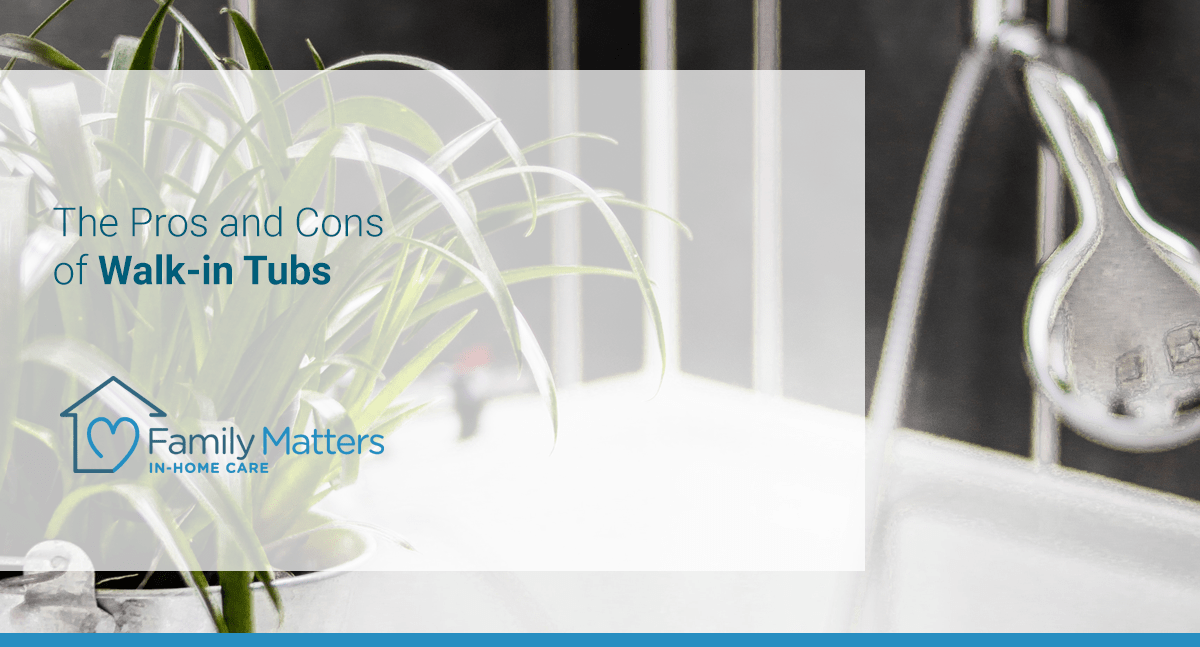
The Pros and Cons of Walk-in Tubs
As people age, many everyday tasks become more difficult, such as getting in and out of bed or a car, moving heavier objects, performing general household maintenance, and typical health regimes. The latter can be especially concerning given elderly people’s decrease in strength and dexterity and increased risk of a fall or similar injury. To mitigate unpleasant circumstances, movement-assisting aids are often installed in strategic locations of a home, inside and out. One such aid involving personal hygiene is the walk-in tub.
Walk-in bathtubs are tubs with a watertight door allowing access by stepping over a low threshold, significantly increasing safety while getting in and out. The door closes tightly and the tub can then be filled for bathing. After draining the tub, a person can open the door and walk out. There are of course pros and cons of walk-in tubs, but many different models and configurations are available today to meet most any need and home style scenario. For example, some models include an extra-wide door to allow safe and smooth transition from a wheelchair.
Walk-in bathtubs are ideal for…
If you are elderly with mobility issues or a loved one is at that stage, walk-in tubs are very beneficial to help ease the burden while allowing personal independence and a comfortable space for bathing. Today’s walk-in tubs also boast sophisticated and tasteful looks that blend well with most any bathroom décor. These types of tubs are not for everyone, however, and it is a big decision to purchase and install one. Before jumping in (figuratively) to a walk-in tub, it’s important to be aware of their pros and cons. First, let’s look at the main driver: safety.
Walk-in tub safety features
The overall end goal of walk-in tubs is safety. Stepping into and out of a traditional bathtub is rife with potential to fall and hit your head, break a bone, or at the very least make a big mess displacing all that water hither and yon. The low threshold of a walk-in tub solves that problem and these tubs also come with intentionally designed safety features including non-slip flooring, handholds and grab bars, built-in seating, and anti-scald water valves. Some higher-end tubs have self-cleaning systems that are great for fighting off mold and bacteria, as well as emergency shut-off systems.
Pros and cons of walk-in tubs
In addition to safety, walk-in tubs offer many benefits for seniors or those with limited mobility.
Pros
- Walk-in tubs offer more water depth than traditional bathtubs; up to nearly four feet compared to about 13 inches. This is ideal for overall comfort from a seated position.
- Built-in seats are fixed in place and about 17 inches high for maximum comfort.
- Hydrotherapy jets, therapy lighting, and heated seating are available on some models.
- Walk-in tubs are ready made for installation and generally require little remodeling construction.
- Proven benefits of warm water to reduce aches and pains and speed healing of injuries such as ulcers or burns, or ease pain from arthritis.
- Walk-in tubs use roughly the same amount of water as a standard tub or shower. They look much larger, but narrower and taller simply distributes the water differently. An average bathtub has a capacity of about 42 gallons while a walk-in holds about 50.
Cons
- Walk-in tubs tend to come with a steep price tag and are not covered by Medicare. Price for a base model starts around $1,000 and can ramp up to over $5,000.
- Installation adds further cost to the unit, depending on the extent of construction required. Significant work can boost combined unit and installation cost to $10,000.
- A walk-in tub’s large door naturally is a potential place for leaking or far more serious water damage. If the door is not properly latched, the door could burst open and unleash an enormous mess. Door seals may also fail and inspire leaking.
- A person must enter the tub, close the door, and sit there while the tub fills. The same routine happens in reverse when draining, making for considerable time waiting. It can take about eight minutes to drain a tub, for example, leaving you exposed to chilly air.
With the amount of water in need of heating, a small water heater might not be up to the task. An upgraded water heater might be a wise or required investment.
If you or your family member is considering in-home care as part of a plan to age in place, contact Family Matters In-Home Care today for a free consultation. Our team is dedicated to supporting your family and helping older adults enjoy life in the comfort of their own home for as long as possible.
Some of the services offered by Family Matter In-Home Care include: Alzheimer’s & Dementia Care, Bed & Wheelchair Transfer Assistance, Companionship, Housekeeping & Meal Preparation, Personal Care, Recovery Care, and Transportation.
Serving the San Francisco Bay Area and Greater San Diego, Family Matter In-Home Care has offices throughout California including: Campbell, CA, Roseville, CA, San Marcos, CA, and San Mateo, CA.
